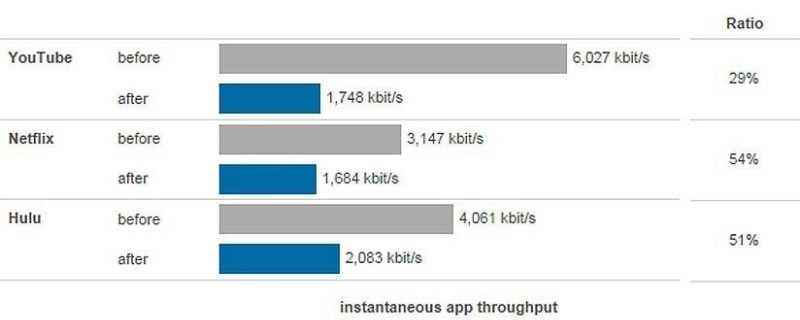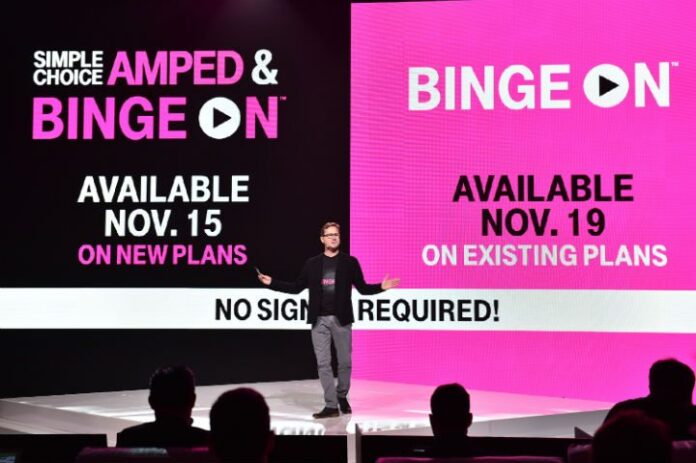T-Mobile US’ new Binge On streaming video offering has reduced video data rates compared to non-Binge On video watching before the service was launched, according to new data from P3 Group.
“The T-Mobile customer video data rate was reduced much less than the maximum bandwidth,” P3 Group concluded, noting T-Mobile US caps the average transmission speed for video content at about 1.5 megabits per second. “The resulting effective data rate of popular video apps still achieves a level of about 60% or more of what was achieved before Binge On, although the bandwidth of the network is capped to a much smaller fraction of what the T-Mobile network is providing to non-video content. Apps with a lower portion of video traffic are less affected with a remaining bandwidth closer to pre-Binge On levels. Other apps are not affected at all.”
The report is based on 12 weeks of crowd-sourced data from more than 1,000 T-Mobile US customers who opted in to P3’s study by downloading measurement software that records smartphone usage and performance, including the speed, duration and quality of voice and data. The study period included six weeks before and six weeks after the launch of Binge On. These test results add more data to recently findings by the Electronic Frontier Foundation, which concluded that T-Mobile US’ “optimization is just throttling” and raised net neutrality concerns in regard to Binge On data rates.
P3, though, said in its report “our findings reveal that, apart from any concerns about net neutrality, this throughput limitation isn’t necessarily a bad thing. Looking at the positive effects, this can be interpreted as a win-win-win situation for customers, video service providers and T-Mobile.”
P3 Communications CEO Dirk Bernhardt noted in a blog post on the study there were “positive effects on the user experience” associated with the Binge On service.
“For example, T-Mobile Binge On customers in the P3 panel who open Hulu spend about 50% more time on it. And increased video usage applies to non-participating service providers, like YouTube, as well as to providers currently partnering with T-Mobile in the Binge On program,” Bernhardt said. “It appears that a rising tide lifts all ships. … Because Binge On partner traffic is not charged by volume, T-Mobile customers have more of their data plan allowance left for non-Binge On services.”

You can read the full report on Binge On data rates from P3 Group here (pdf).

